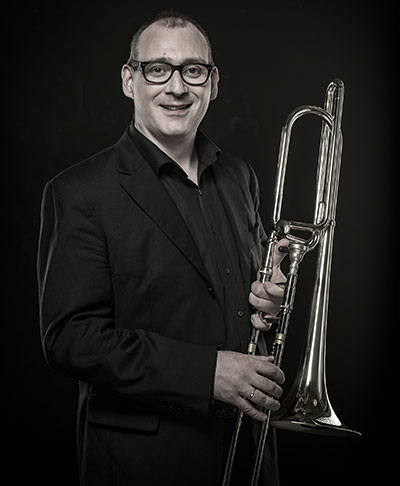The Tough Road to the Orchestra
For the second trombone post of the Vienna Symphony, it was 101—and for the solo flute position, it was 239 musicians who applied. Figures like these show with abundant clarity how the competition is enormous, the pressure is high, and the young players are getting better and better. And while this or that audition procedure may differ from orchestra to orchestra, the basic requirements for becoming part of an ensemble are the same for everyone. As pedestrian as it may seem, the most important of these is: the best possible preparation. On this, all instrumental teachers agree. Lieke te Winkel, concertmistress of Lower Austria’s Tonkünstler Orchestra and an mdw professor since 2011, puts it in a nutshell: you need to be so well prepared for your audition that you can’t fault yourself for anything. An orchestra doesn’t announce free orchestral seats every day. So when Day X finally arrives, you need to be prepared.

The Right Preparation
Regardless of whether it’s strings, winds, or percussionists that are needed, the playing field is level for (almost) everyone. For each instrument, there are pieces that those who audition need to have learned. Auditions for all orchestras and all instrumental groups take place according to similar procedures. A jury—which usually consists of orchestral musicians—chooses the best players from the preliminary audition in a knock-out process. Applicants play their first two rounds behind a curtain. There, all applicants—men and women alike—are equal, and those who score the most points in a given round move on to the next one. The still comparatively small number of women in Viennese orchestras is owed to the fact that the Vienna Symphony only began admitting women in 1986, with the Vienna Philharmonic waiting until 1997 to follow them.
But for everyone, regardless of gender, auditions are demanding tests of nerves. Oliver Madas, a percussionist in the Vienna Philharmonic, was appointed to an mdw professorship in 2008. His audition for the “Phillies” now lies more than ten years in the past. Back then, he used autogenic training to work towards that crucial moment. And nowadays, young musicians’ mental training is seen to by specialists. The demands made on percussionists are especially high, he explains. Unlike their colleagues, percussionists need to have mastered several instruments: alongside their core instruments such as snare drums and tympani, they also have to play melodic instruments such as the vibraphone and the marimbaphone. And then there are the hand percussion instruments such as cymbals, tambourine, triangle, and various instruments of Latin American origin.

One thing applies to all, however: one needs to know what’s going on in an orchestra and on a musical theatre venue’s stage during the performances. This is best accomplished by listening to recordings again and again—regardless of whether they’re of symphonic works or operas. “That helps to develop a feel for sound, tempo, and phrasing,” explains Te Winkel. And it’s best done with the score, adds Madas. It’s likewise essential to gather experience in different orchestras as early as possible. Because only there—in keeping with the principle of “learning by doing”—does one acquire the all-important skill of following a conductor. “That can only be worked on in actual practice,” says Otmar Gaiswinkler, who plays as the Vienna Symphony’s first trombonist and also teaches at the mdw. It doesn’t matter whether one does so in a university orchestra or—ideally—in a selective youth formation such as the renowned Gustav Mahler Youth Orchestra or the European Union Youth Orchestra, to name just a few. And it’s also recommendable, says Te Winkel, to secure a place as a substitute or an intern in a professional orchestra.
Team-Players
Not to be underestimated is one’s trial period as a new member in a professional formation. These are the one-to-two years on which everything depends. One needs to work on oneself constantly during this period in order to truly integrate with an orchestra in terms of its sound and internal social order. One needs to be conscious of how one’s always sitting onstage together with between 80 and 90 other individuals. And one needs to blend with the colleagues sitting in close proximity just as well as with colleagues sitting 20 to 30 metres away. “That’s a challenge,” says Madas. And Te Winkel adds: “One should always prepare well for every rehearsal.”

But it’s not only quality that decides whether one will be retained by an orchestra. “Every good instrumentalist also has to be able to take their place as part of a collective,” says Gaiswinkler. And whether that will work is something that one typically only finds out through actual practice. In some places, such as the string sections, it’s more important to have team players than it is for the solo flute position, Gaiswinkler says as example, adding: “But even as solo flutist, you still have to be capable of working in a team.” And the best technique and optimum integration into the orchestra’s sound are useless if the interpersonal chemistry isn’t right—because disagreements and arguments just consume energy unnecessarily. “You have to be able to work together with colleagues in such a way that everyone can play in an ideal manner,” sums up Gaiswinkler.
Because only this gives birth to that quality which Lieke te Winkel thinks is the most wonderful thing about making music together: “It’s those moments where the sound, the music, the orchestra, and the audience form a kind of whole. Every sound feels right, and no one knows why.” Which is reward enough for every effort!

